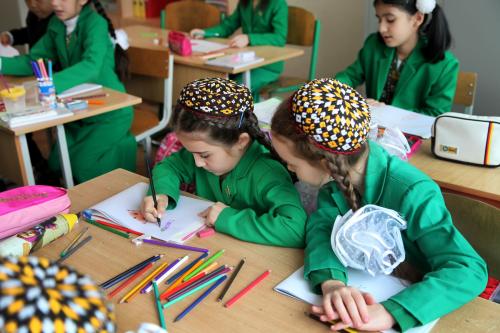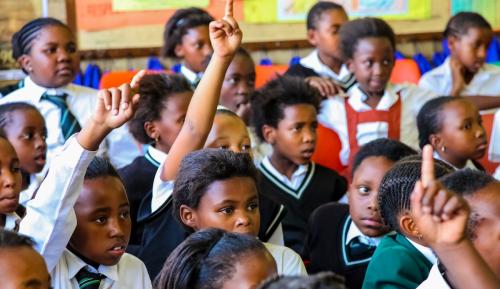This essay is part of “The SDG second half: Ideas for doing things differently.”
Still reeling from the COVID-19 pandemic, education systems around the globe are facing a myriad of challenges. The world did not have enough teachers before the pandemic, but today the crisis is even worse. Overwhelmed, exhausted, underpaid, and unappreciated, teachers (like nurses in many places) are leaving the profession. UNESCO estimates tens of millions more are needed globally—from roughly 9,000 more in the Netherlands to 16.5 million in sub-Saharan Africa. Children’s well-being has also suffered drastically. Child marriage is on the rise in countries in the Global South with UNICEF estimating 10 million more girls at risk of child marriage due to COVID-19. In the Global North, especially, the pandemic has created a mental health crisis with the American Academy of Pediatrics declaring it a U.S. national emergency in October 2021.
Unsurprisingly, the pandemic’s lasting impacts also reach academic learning. Many children, especially those with learning differences and from the most marginalized communities, are being further left behind on mastering essential skills like literacy and numeracy. In low- and middle-income countries, learning poverty (the percentage of 10-year-olds not able to read a simple text) has increased due to the pandemic, rising from 57 percent pre-pandemic to an estimated 70 percent in 2022. In the high-income country context of the United States, equity gaps widened with math proficiency scores for eighth-graders falling to levels not seen since 2000.
Given what educators and systems leaders face, many argue that dialing back our ambition and focusing on closing the learning gaps on essential academic skills, namely literacy and numeracy, should take center stage rather than maintaining our collective focus on developing the lifelong learners envisioned in SDG 4. However, dialing back ambition is not the answer. Finding new and transformative ways to tackle the suite of problems is. The risk of replacing the SDG education goal with a more focused objective on, say, literacy and numeracy is that even though it would be framed as a floor to build on, education systems will orient around it and ultimately treat it as the core objective. It will unwittingly become a ceiling. One has to look no further than the United Nations Millennium Development Goals that focused on access to primary school for boys and girls as the starting point for a quality education, assuming quality teaching and learning would follow. Instead, it became the end goal with millions of children entering new schools and no learning taking place.
What is needed is a serious attempt to meet SDG 4 not by tinkering on the margins but by transforming systems so that they address the deep gaps in equity and relevance simultaneously. One approach to doing this is to harness innovation and bring it to the center of systems as we argued in 2018 in “Leapfrogging Inequality: Remaking Education to Help Young People Thrive.” The COVID-19 pandemic showed that education systems can indeed innovate in their core business. Several important pandemic-era innovations have the potential to deeply transform systems. For example, schools meaningfully sharing power with families on how to best collaborate to educate children is one important innovation that would transform systems. As our work in the Brookings Center for Universal Education highlighted, schools with deep relational trust between families and teachers are 10 times more likely to improve students’ academic and well-being outcomes. Maintaining this shift alongside other new practices such as effectively harnessing technology and integrating a focus on student well-being and mental health can help reach more children and provide them with the support and skills they need.
Ultimately, developing and stewarding education system transformation requires a participatory approach that puts those inside the system at the center. Government leaders, teachers, students, and communities need to develop a shared vision of the purpose of their own education systems. Too often, essential actors feel left on the sidelines with too little space made for their involvement by those with power. Engaging in participatory policymaking approaches is essential to sustain the commitment needed to accompany transformation over time and has been done in contexts ranging from British Columbia, Canada to Bogotá, Colombia. As David Sengeh of the government of Sierra Leone and I wrote together last year, education system transformation hinges on refreshed local assessment of goals—“are they meeting the moment that we are in, are they tackling inequality and building resilience for a changing world, are they fully context aware, are they owned broadly across society”—and then aligning action around shared answers. With common purpose, education systems can be transformed to dramatically reduce inequalities and produce lifelong learning for all.
The Brookings Institution is committed to quality, independence, and impact.
We are supported by a diverse array of funders. In line with our values and policies, each Brookings publication represents the sole views of its author(s).




